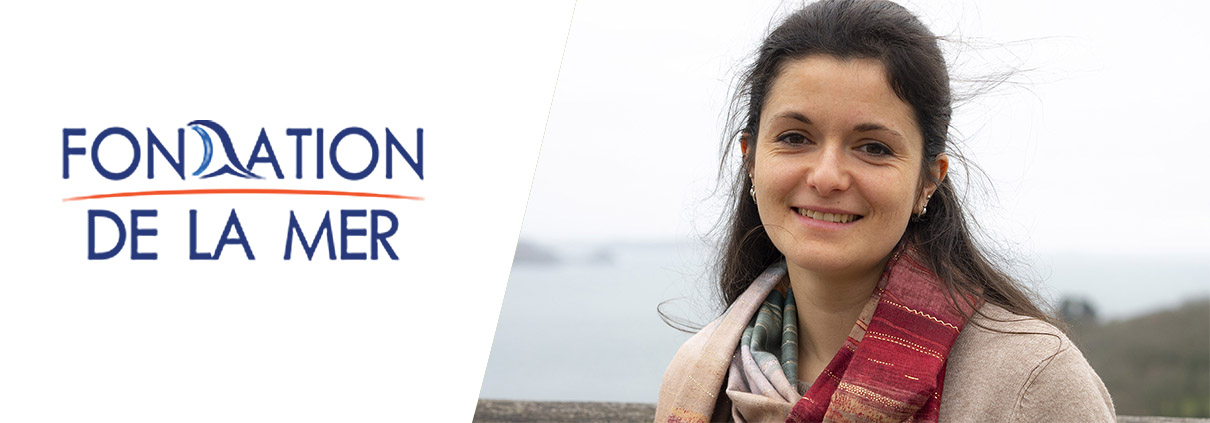Maéva GESSON Winner of a grant from the Fondation de la Mer
The Fondation de la Mer was created in 2015 in order to support various actors in the protection of the Ocean. It conducts programmes to protect marine biodiversity and combat pollution at sea, encourages research and innovation, and aims to inform and raise awareness among the general public. The Fondation de la Mer scholarship supports, in particular, PhD students enrolled in a French-speaking doctoral school each year by providing them with €5000 in material aid, and this year it was awarded to Maéva GESSON, a doctoral student at LEMAR.
Maéva is part of the Chibido team at LEMAR, supervised by Brivaëla Moriceau and Frédéric Le Moigne. Her thesis was funded by the France Canada Research Fund and is entitled “Mechanisms of marine snow fragmentation in the mesopelagic zone of the ocean: implication on CO2 sequestration by the biological carbon pump“.
In practice, marine snow forms naturally at the ocean surface by the aggregation of organic carbon-rich particles derived mainly from phytoplankton. These aggregates sink into the water column and create a flow of carbon to the depths, providing a food source for deep-sea organisms and sequestering carbon for thousands or even millions of years on the ocean floor. However, only a few percent of this marine snow eventually reaches the abyss, and half of this can be explained by the fragmentation of the aggregates between 100 and 1000m depth. Maéva’s thesis work aims to estimate whether fragmentation phenomena induced by oceanic turbulence or resulting from the movement of zooplankton could be responsible for this fragmentation, and if so, in what proportions. She is particularly interested in the adhesive molecules contained in the aggregates in order to assess whether these determine the fragility of the marine snow.
The grant money will be used to partially fund the design of new rolling tables, which are necessary tools for the formation and study of marine snow in the laboratory. Designed and produced by the UBO Open Factory, these will allow temporal monitoring of the number, morphology and fall rate of aggregates by imaging. They will also be adapted to missions at sea, such as the APERO campaign in which Maéva will participate this summer. The plans and assembly instructions will be distributed to the whole community in open access at the end of the project.







